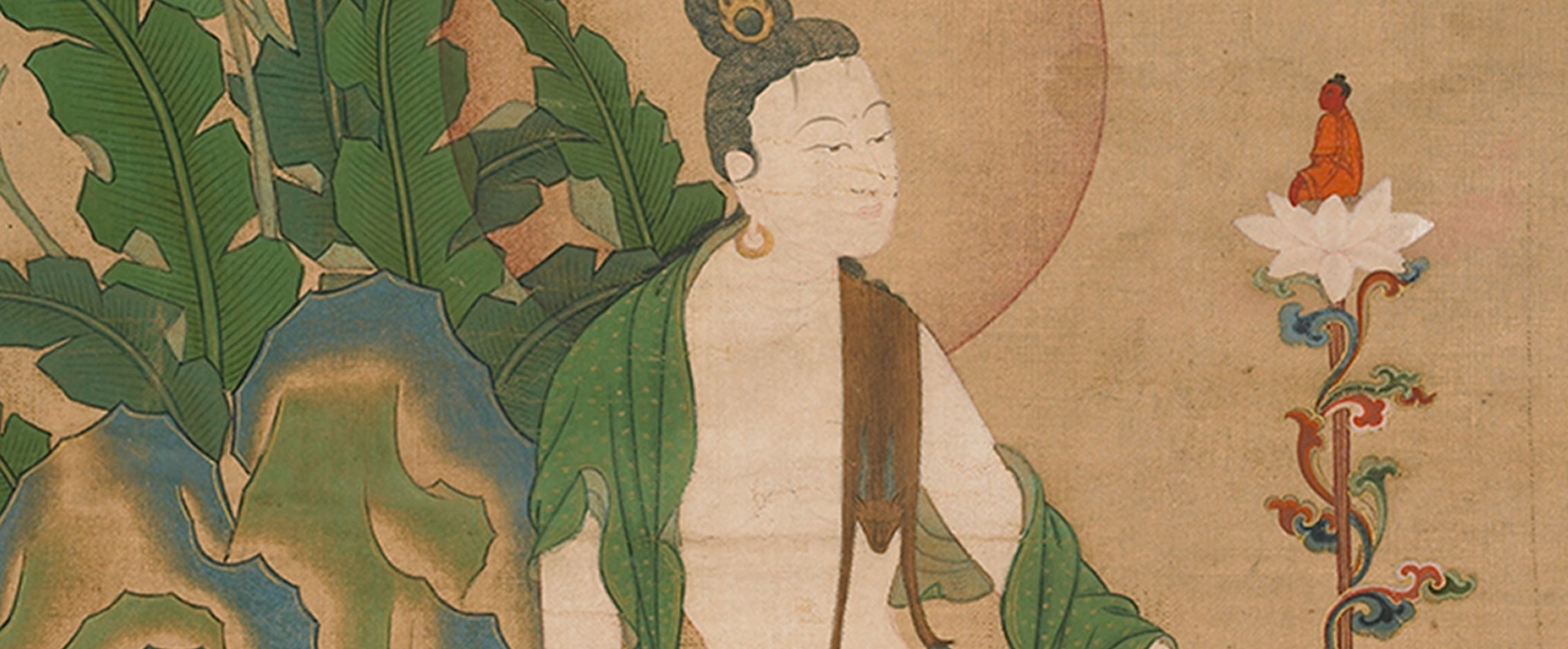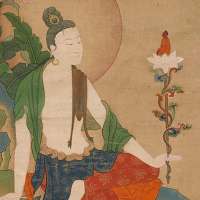
Much like religious princes, the Karmapas, heads of the Karma Kagyu, one of Tibet’s principal schools of Buddhism, traveled for centuries in large monastic tent encampments. These courts, which included portable temples, a community of monks, and skilled artists and artisans, produced their own distinctive painting style, known as the “Encampment style” (Gardri). The painter Namkha Tashi founded the style in the court of the Ninth Karmapa (1555-1603) in Central Tibet. He looked to Indian figural models and placed them in landscapes inspired heavily by the works of Chinese court painters.
Most of what we know of this painting tradition belongs to its eighteenth-century revival fostered by the great scholar-painter Situ Panchen (1700-1774) in Kham Province, Eastern Tibet, with its new artistic center at his monastic seat, Palpung. Even more important to the history of Tibetan art than Situ Panchen’s role as a painter is his role as a patron and designer of paintings, many of which continue to be copied to this day. For the first time anywhere, this exhibition traces the career and artistic legacy of one of the great patrons and artists in Tibetan history.
Plan your visit
Send Your Comments
Comments are moderated, and will not appear on this site until the Rubin has approved them.


